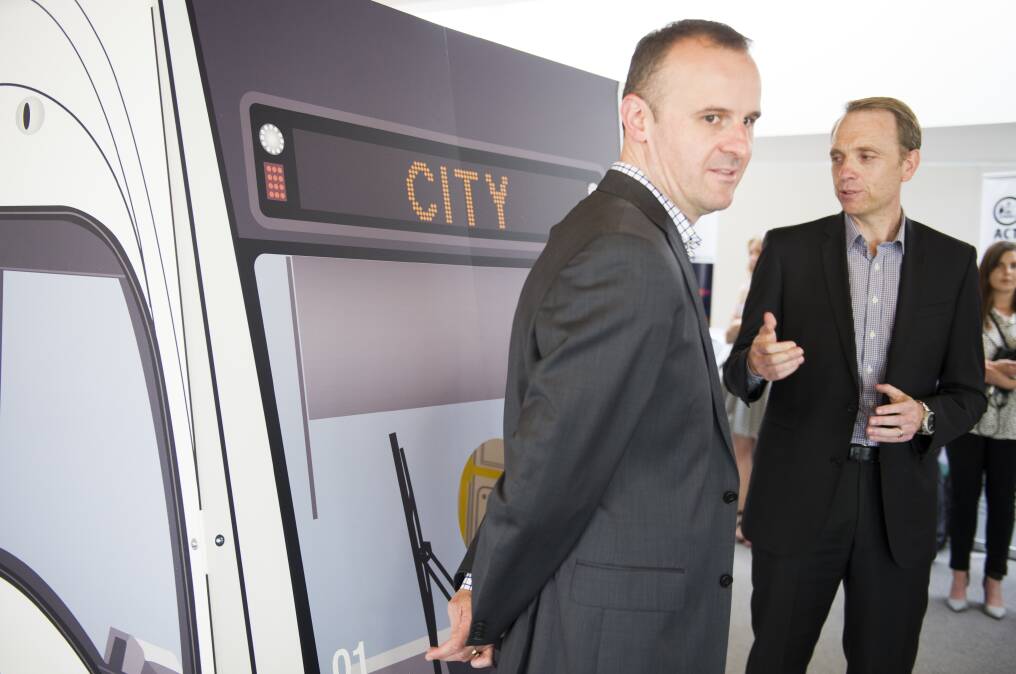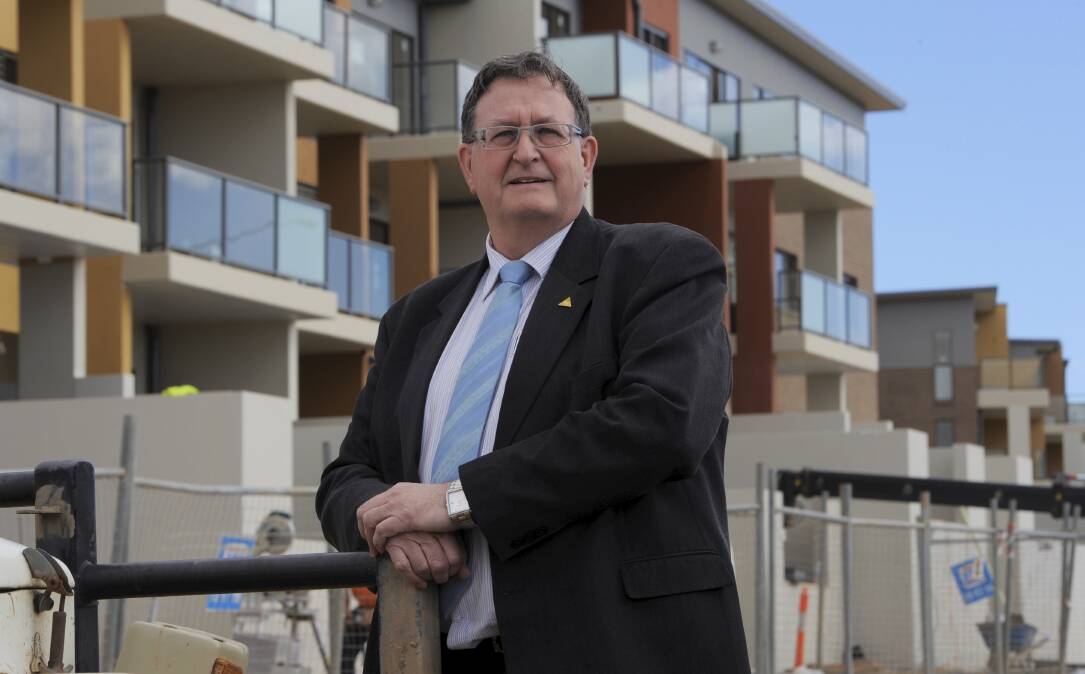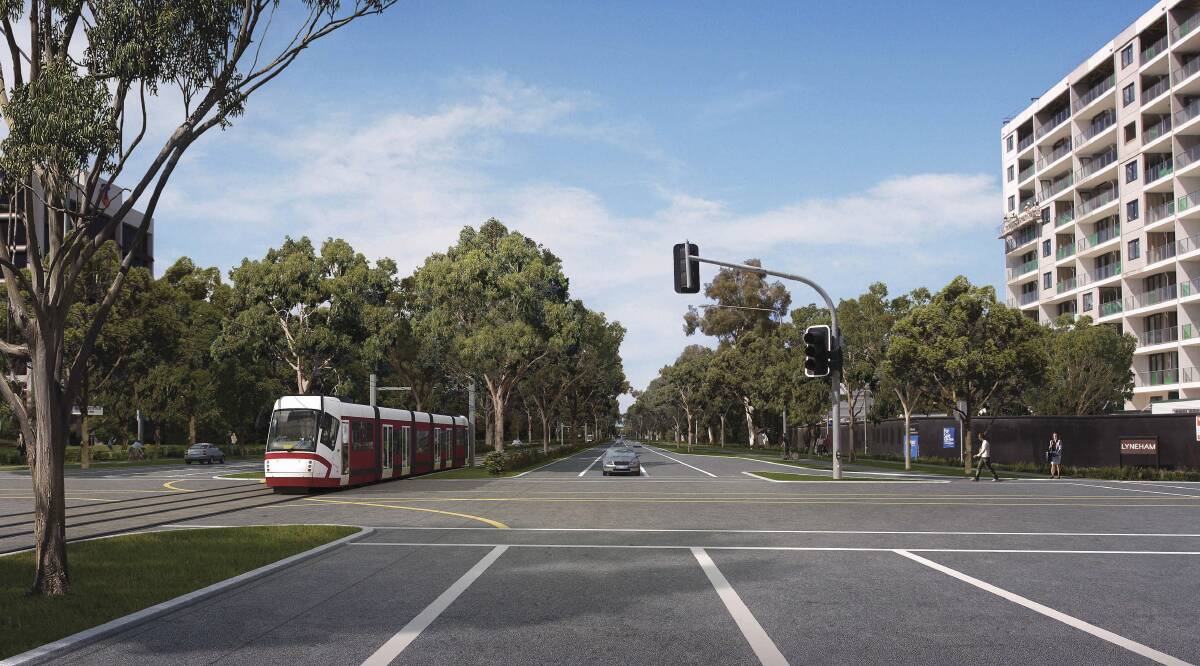The case for a rapid bus service between Gungahlin and the city was "significantly stronger" than the case for light rail, ACT bureaucrats warned the government more than a decade ago.
The Economic Development Directorate told the ACT's cabinet it supported future detailed investigations into the best transit system for the corridor, but noted it was important any new system readily connected into the broader public transport network.
Officials also raised concerns in July 2012 over claims the Canberra community had a "clear preference" for light rail, pointing to potentially inadequate or premature estimates of the impact on the ACT's budget, rates and charges.
"While there is no doubt a clear preference for [light rail] amongst some groups notably Disability ACT, these facts do not in themselves constitute meaningful evidence of a clear preference in the community for [light rail]," the directorate said.
"Especially, as the study appears to suggest that what preference for [light rail] there may be within the broader community is malleable and likely to shift once respondents to this question are better informed of the relative costs of the two alternatives."
But the concerns were downplayed by the then-sustainable development minister Simon Corbell, who noted in the cabinet submission light rail would be more expensive than a bus system, but said there were more factors to consider.

"There is international research to suggest an almost 'innate' preference by people for rail, with at least 75% of people choosing light rail over bus even when all conditions are the same," Mr Corbell's submission said.
"Light rail is generally considered more environmentally sustainable than bus options, with emissions likely to be minimal. It is also less likely to generate noise disturbance."
Cabinet was told a bus rapid transit system would cost $276.4 million and deliver a return of $4.78 on every dollar spent if Northbourne Avenue was transformed into a high-density corridor.
Light rail would cost $614 million, cabinet was told, and deliver a return of $2.34 for every dollar spent under a high-density transit corridor scenario.
Cabinet was told there was "limited" international evidence bus rapid transit would deliver higher density development along the transit corridor, unlike light rail which had "identified international examples".
"Overall, EDD believes that the case for Bus Rapid Transit (BRT) appears to be significantly stronger than that for Light Rail Transit (LRT) and the submission might have given more attention to certain issues. For example, the comparative estimated operating cost of BRT (at $3.47/km) compared with LRT's cost (at $6.06/km) ... is particularly notable," the Economic Development Directorate said in additional comments on the cabinet paper.
All government directorates supported the cabinet decision to put forward a case for funding a transit project on the corridor to Infrastructure Australia.
Light rail stage 1, which was completed in 2019, ultimately cost $675 million to build, $108 million less than expected in the business case.

The Economic Development Directorate's comments were made on a July 2012 cabinet paper, which recommended the government pursue funding from Infrastructure Australia for a transit corridor between Gungahlin and the city.
At the time, ACT had not yet decided to pursue light rail on the corridor.
David Dawes, the directorate's director-general at the time, told The Canberra Times in August 2012 he believed "the Canberra community and probably a lot of members of government probably lean towards light rail"
"I think it would work well. I think when you look at other cities that have introduced light rail, the patronage has gone up. There is a love and attachment for light rail," Mr Dawes said.
The government committed to light rail as part of the power-sharing agreement struck between Labor and the Greens after the October 2012 election.
The ACT government has faced persistent criticism for its economic assessments of light rail's benefits, which have generally considered the wider economic effect of the project and included expected development along the corridors.

Mr Corbell in 2016 defended the government's decision to pursue light rail, arguing the choice was more than an economic assessment.
"City building is about more than simply economic logarithms, it's also about making sure we deliver the best design outcome for the Nation's Capital," he said in comments reported at the time by the ABC.
"Northbourne Avenue is a key approach route, building more roads for more buses is not befitting for a national avenue like Northbourne.
"The government has to take account of economic, but also urban design and other considerations in deciding the best transport outcome for our city."
A qualitative assessment of bus rapid transit and light rail noted a significant increase in density along Northbourne Avenue was required to make light rail an economically viable project.
The paper was released last year following a request by The Canberra Times to access cabinet records under the ACT's 10-year release scheme.







